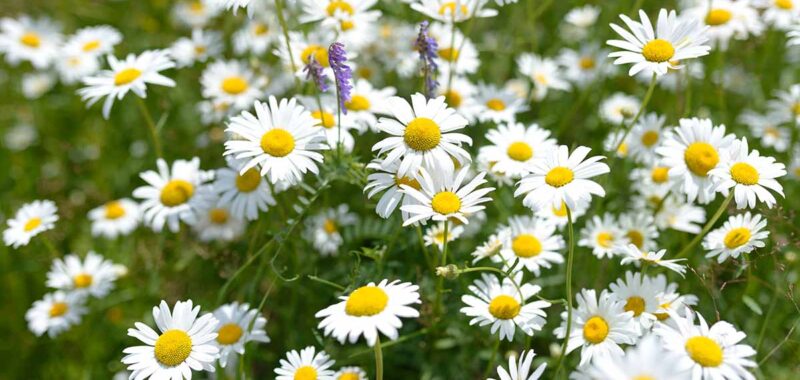They can also be artfully arranged with other ground covers and planted as borders along paths.


And of course, don’t forget about those lovely little flowers! Those you don’t pick for a relaxing cup of tea will help attract pollinators and other beneficial insects to your garden.
The only downside is that these lawns aren’t incredibly tolerant of heavy trampling, so they may not be the best in areas with high foot traffic such as kids’ play areas.
However, they can tolerate some amount of wear once established, and actually release a sweet apple-like aroma when stepped upon.
Selecting Species
It is important to choose the appropriate species for this purpose.
German chamomile, the plant often grown in herb gardens, has a tall and upright habit that is not ideal for lawn growing.
Instead, look for Chamaemelum nobile, also known as English or Roman chamomile, which has a creeping habit and grows low to the ground.


These plants grow dense mats of fern-like foliage that spreads about 12 inches wide, reaching only three to six inches tall.
The small daisy-like flowers with white rays and yellow centers bloom through the summer and into fall.


Chamomile Seeds – Roman
You can find seeds in a variety of packet sizes from Eden Brothers.
If you desire a neater look without flowers, C. nobile ‘Treneague’ is the way to go.
This Roman cultivar is non-flowering, with aromatic dense foliage that creates a smoother, more manicured look. It grows up to four inches tall and spreads 18 inches wide.


Incredibly hardy, C. nobile can be grown in USDA Hardiness Zones 4 through 11.
You can learn more about the differences between English and German varieties here.
Planting
Chamomile grows easily from seed, and the best time to plant is in early fall or spring. These plants prefer full sun and well draining loamy soil.

